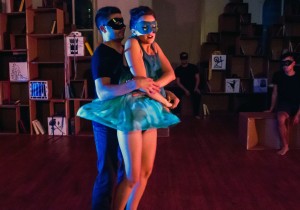After reading the tales of Snow White, Thumbelina, Sleeping Beauty, or Belle, have you ever felt that something was missing? With the lyrics of Nick Luckenbaugh, director and choreographer Megan Mekjian uses the musical Royal Fables to fill in the gaps of these familiar fairy tales.
The musical begins with Scheherazade (Livie Castro), a young bride from One Thousand and One Nights, who sings her song about the murderous king and how she must sing a different song each night in order to persuade the king not to kill her on their wedding night. From this song, she introduces and guides the audience through the tales of female protagonists from various fairy tales — each singing a song that relates to their own fable. The twist is that these songs have never been heard, and each song reveals an inner thought these women have never shared with anyone else before.
Although a cleaver plot, Royal Fables' creative story line is confusing to the audience members who haven't read the program prior to the show. With no dialogue, the audience is only left with the lyrics of the songs as they sort out the characters and plot. Although some of the women could not be heard over the three-person band (Ansel Cohen, Jimmy Lopez and Mike McGuckin), there were a few subtle hints that could be found within the technical aspects of the show such as the set and costumes.
Set on the wooden floors of a large room, the cardboard box inspired set added a child-like feel to the environment. The homemade bookcases added depth to the stage and created a convenient backstage for the actors. The images on the bookcases matched the images in the program and allowed the audience to figure out which fables would be included in the show.
The short, whimsical-styled costumes left us with little to no clues at which fable the women came from, but instead created a loosely uniformed look for the princesses and allowed them to freely perform their choreographed routines. As stated in the libretto, each princess wore a mask until it was their time to sing their own song. In this sense, the masks became a symbol of taking off their guise to reveal their own truths. However, yet again, there wasn't an obvious distinguishing design on the masks to help the audience identify which female character was singing the song.
With a cast of 18 actors, Royal Fables' contained plenty of raw talent. The cast's dedication to the show was obvious in their flawless execution. Without the actors’ mesmerizing performances, the play would have fallen flat, especially since the musical had no clear climax. Although the songs were beautifully sung, there was no build in the plot and nothing to propel the story besides the actors’ high energy.
Royal Fables ran until Nov. 15 at the Access Theater (380 Broadway between Walker and White Sts.). For more information, visit www.libratheater.org.


